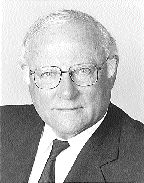The rationalization of the international gold mining industry is one of the most profound examples of globalization. The quest of the major players in this industry to reduce production costs, attract investment capital and achieve adequate shareholder returns has led the world’s largest gold miners to all corners of the globe in search of major, large-tonnage deposits.
A number of mid-sized gold miners with significant resources and reserves have been eliminated over the past 10 years by way of takeovers, amalgamations or mergers. We now have multi-million-ounce gold producers, such as Newmont, Barrick, Placer Dome and Gold Fields, and all are producing 2 million oz. or more annually. Indeed, some are producing as much as 6 million oz. annually. A diminishing number of mid-sized gold miners producing 500,000 oz. or more annually still exist, while the junior gold producers (those with less than 300,000 oz. or more of annual production) have been neglected.
The mineral industry needs massive amounts of risk capital to build the large-tonnage mines that are needed to achieve the benefits of lower unit costs and keep the rationalization process going. Investors need reliable technical information, based on standard definitions and high-quality corporate disclosure standards, in order to compare and contrast the investment potential of various mineral projects. The gold mining industry also needs high technical and disclosure standards to free it from scandal, regain investor confidence, and compete with other industries for access to capital.
After the Bre-X debacle of early 1997, the Canadian mineral industry’s desire for enhanced technical standards, the securities regulator’s concern about fraud in the market place, and the competitive nature of the international mineral industry led the Canadian mineral industry and other leading mining jurisdictions (Australia, the U.S., the U.K., South Africa, Chile and Peru) to raise the standards bar for all technical aspects of the international mineral exploration and development industry.
From a Canadian perspective, the most significant influence on the Canadian mineral industry since the Bre-X debacle has been the recommendations of the Toronto Stock Exchange/Ontario Securities Commission Mining Standards Task Force. These led to internationally recognized resource and reserve reporting standards, new internationally recognized mineral valuation standards, the legal enshrinement of the concept of the competent or qualified person, enhanced mineral public disclosure standards, the specialization and rationalization of mineral industry capital markets in both Australia and Canada, and enhanced competition for mining company listings by the London Stock Exchange’s Alternative Investment Market (AIM) and the American Stock Exchange.
The efforts of the international mineral industry to raise the standards bar are exemplary. Due credit must be given to the Australian, Canadian and South African mining industries and their technical organizations.
Unfortunately, the thrust towards higher technical and disclosure standards (designed to reduce investor risk) has met a major delay, as the accounting profession has not moved forward at the same pace on the internationalization of global accounting standards. As a result, restrictive disclosure and lack of uniformity of mineral industry financial reporting internationally have left the mineral industry in a financial accounting mess, and prevented the industry from achieving its ultimate reward — access to large amounts of investment capital at reasonable rates.
The International Accounting Standards Board (IASB) has excluded the extractive industries (minerals and petroleum) from its move towards current value accounting in Europe and many other regions. The global mineral industry will suffer unless the IASB’s proposed development of an international financial reporting standard places the minerals industry on a “level playing field” with other industries. The Canadian and U.S. accounting standards setters must accelerate their move to converge their North American Generally Accepted Accounting Principles accounting systems with the IASB’s International Financial Reporting Standards, and keep raising the standards bar by adopting current value accounting for both the asset and liability sides of the balance sheet so that the globalization can achieve its ultimate effect — rationalization of the world’s mineral industry in order to provide the world with large volumes of metals at the lowest possible price.
The mineral industry has led the way to globally accepted technical and disclosure standards. It is now time for the accounting profession to get its house in order by harmonizing international accounting rules as well as adopting current value accounting.
— The author is a lawyer and chair of the natural resources group at Toronto-based McMillan Binch. The article originally appeared in the September issue of InBrief Magazine.


Be the first to comment on "Accounting principles out of sync"